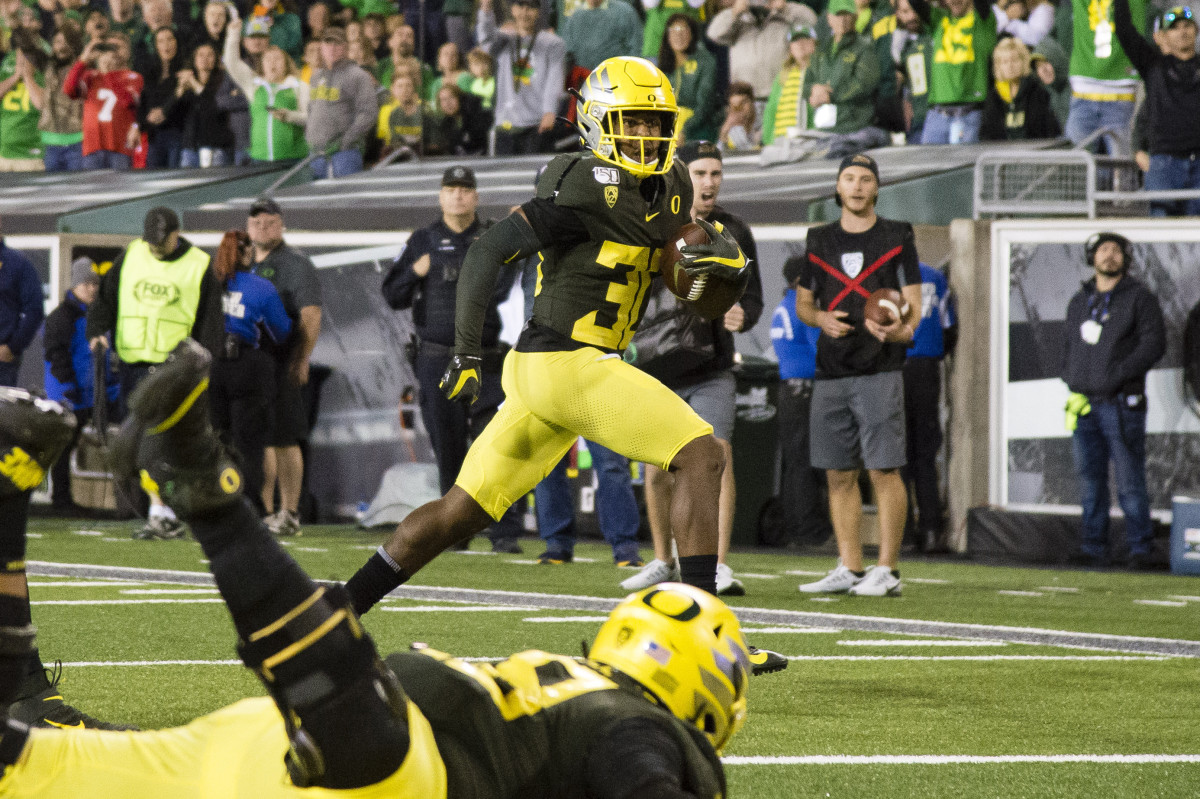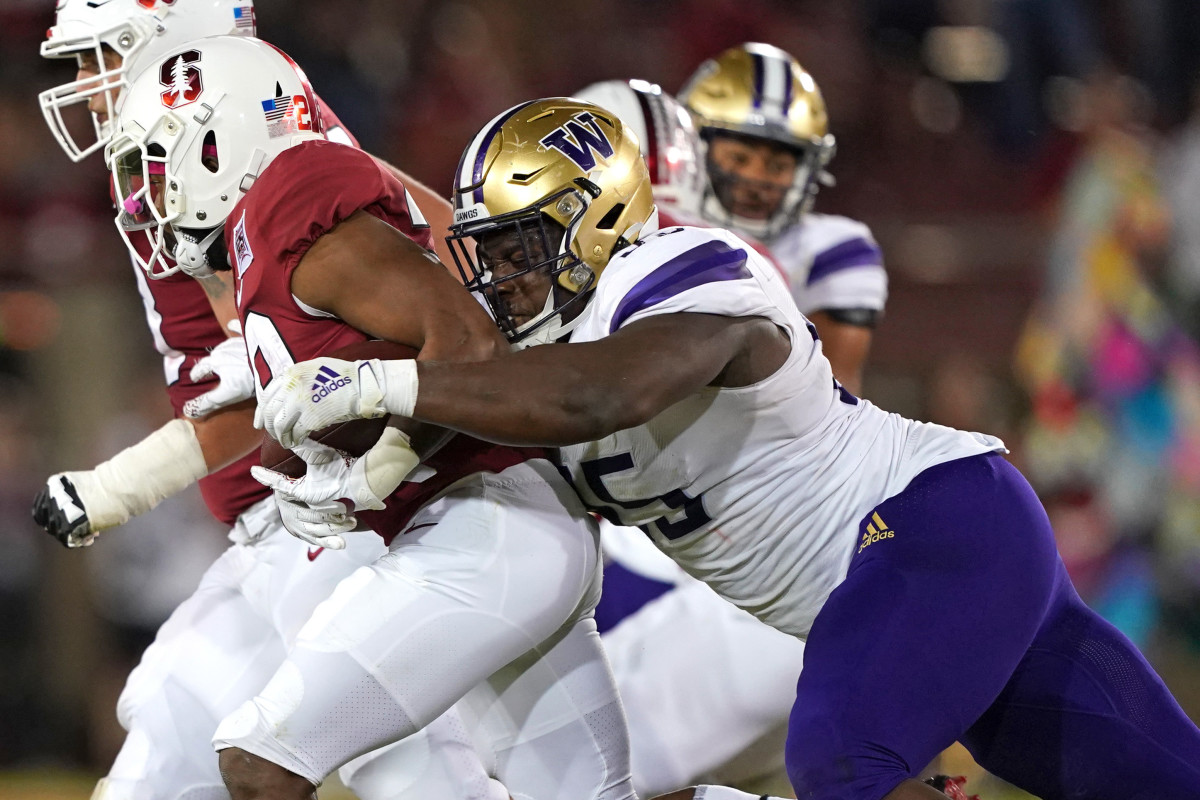Analyzing How Oregon's Running Game Can Take Advantage of Washington's Inexperienced Linebackers

The Ducks' ground game hasn't quite been as dominant as they want it to be, but back-to-back weeks of 250+ yards on the ground have things rolling in the right direction. Meanwhile, the Huskies are dealing with a young core of linebackers, and have at times struggled slowing down opposing offenses. Who will gain the edge when these two meet? Let's find out.
Oregon Rush Offense

Somewhat surprisingly, Oregon ranks only 56th nationally and 5th in the Pac-12 with 176.83 rush yards per game on the ground through seven weeks. After watching Saturday’s performance against Colorado, there is an argument to be made that offensive coordinator Marcus Arroyo should continue to commit to running the ball more consistently, although it’s hard to turn away from the arm of one of the best quarterbacks in college football. But last week’s game was a truly dominant showcase by Oregon’s running game, and it was a great reminder of what this veteran and talent-laden group is capable of. The Ducks rolled up 252 total rushing yards on an average of 7.0 yards per carry and starter CJ Verdell alone had 171 yards on just 14 attempts.
Although Verdell’s impressive running proved he is worthy of a clear cut role as a workhorse back in this offense, the offensive line’s performance deserves major credit as well. Previous articles have already focused heavily on sophomore left tackle Penei Sewell, so it’s best to just say this: he’s a stud. The remainder of Oregon’s starting 5 offensive linemen are all seniors, and their experience together was obvious against Colorado. Watching the different movements and blocking schemes that they executed was like watching an artist pen a masterpiece. Sewell was recently named to PFF’s midseason All-American team this week, and his counterparts have pulled their weight as well. Oregon currently ranks 8th in the Pac-12 with 36 total rush attempts per game, so a slight philosophical switch towards additional carries for Verdell and his running mates may be in order this week. Sewell and the rest of this talented offensive line would be up for the challenge.
Washington Rush Defense

In terms of stopping the run, the Huskies rank 57th of 130 FBS teams and 5th in the Pac-12 with an average of 146.71 yards per game allowed to opponents. This average is about 30 yards fewer than Oregon’s offensive rushing average, but Washington’s elevated average against Pac-12 opponents (186 yards per game) likely gives a clearer picture of what we can expect on Saturday. On the interior, their D-Line is full of talent and experience with previously mentioned Levi Onwuzurike (Jr.) and Benning Potoa’e (Sr.) both earning a spot on PFF’s Pac-12 Team of the Week for their performances against Arizona last week.
Washington’s main weakness defensively, however, has been at the interior linebacker spot. Washington graduated Ben Burr-Kirven and Tevis Bartlett from last year’s team. Both were integral parts of the defense last year — Burr-Kirven was the leading tackler in the FBS and Bartlett offered positional versatility and veteran leadership. Their replacements, Brandon Wellington and Kyler Manu, had very little starting experience heading into the 2019 season and that has been apparent at times. While their defensive line poses a difficult matchup, it seems that an important aspect to success against the Huskies is to design run plays that force the linebackers into diagnosing different cutback lanes.
In Washington’s two losses this year to Cal and Stanford, they allowed more than 190 yards total rushing to their opponent. Their overall rushing yards allowed average this season does not point to an obviously exploitable matchup, but this will likely be one of the most talented offensive lines they have faced. Although no single position can fully determine the success of a defense’s ability to stop the run, it’s clear the linebackers will need to be diligent in their support of the defensive line if they hope to stop Verdell, Travis Dye, and Cyrus Habibi-Likio from running roughshod for a second week in a row. We can expect this front seven to be tested early on, and the results will weigh heavily on the outcome of the game.
Analysis
Washington’s front seven will have a difficult time matching up with Oregon’s offensive line, especially when Oregon uses blocking schemes that force the linebackers to protect against various cutback lanes. While the total volume of rush attempts may be dictated by game flow and situation, expect Arroyo to attempt to establish the run early and often on Saturday after the success against Colorado.
Advantage: Oregon
Washington’s main weakness defensively is their inside linebacker corps, and Oregon’s offensive line should be able to open enough lanes to get Verdell opportunities in the second level of defense. Washington’s gap control will be vital in this matchup. Unless the Huskies get a big first-half lead, forcing Oregon to throw a higher percentage of plays, expect the Ducks to pound the rock with decent success.
